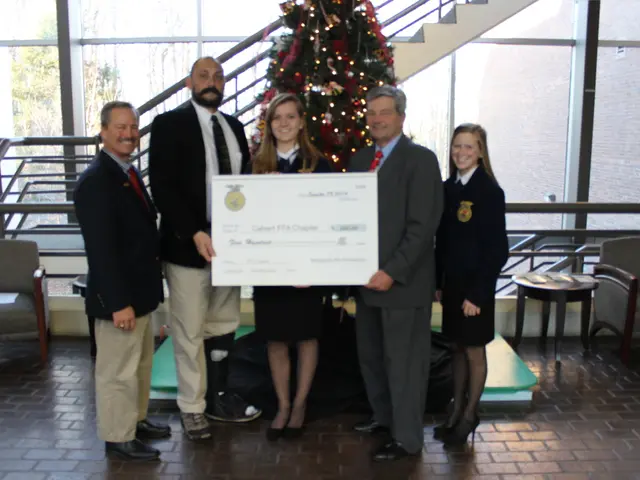tourist attraction straddling the boundary of the Urals and Siberia: museum complex situated in the rural village of Chudovo
Heading west of Bogdanovich, nestled near the new Siberian Highway, there lays the quirky village of Chudovo. Here, centuries ago, travelers would stop at the border between the Urals and Siberia, with popular banter being that their heads were in the Urals while their toes were freezing in Siberia.
A historical monument marks this border line, and it's here in this humble village that an unexpected treasure lies. Don't let the quiet streets and rustic charm fool you. Hidden within this forgotten corner stands The Chudovo Museum, a captivating cultural-historical center that's been drawing visitors for years.
The museum's fame has spread like wildfire, fueled by word of mouth—it's not found on social media. Thousands flock to Chudovo each year to immerse themselves in three centuries of history, showcased over 200 exhibitions. With over 15,000 artifacts, it's a veritable time capsule that brings the past to life. Prepare for a day's worth of exploration as a thorough dive into the museum's riches would take more than one visit.
The village itself has an intriguing history, dating back to 1703. At the turn of the 20th century, when the village was on its last legs, parcels of land were given away for next to nothing, and few were interested in taking it. Fast forward to today, and the village has come back to life with new residents building homes.
As you approach the museum, you'll find remnants of the Great Siberian Highway and the old chapel, where travelers, both willingly and unwillingly, headed to Siberia would pray. You can still feel the weight of history pressing against you as you walk along the deep ditches and widened paths, a tantalizing glimpse into the past.
Wander around the sprawling 1,800 square meter museum complex, both indoors and outdoors. The museum houses over 100 collections, heralding from various genres, as you delve deeper, you'll discover a wide range of exhibits, from everyday items and technological advancements, to art, communication devices, and even the first personal computers.
The museum's story began 15 years ago, when the retiring Victor Yakovlevich Ovchinnikov decided to build a dacha in Chudovo and start collecting antique items to decorate it. Today, his passion has transformed into a living museum, funded through the generosity of visitors and the museum's growing collection. There are no hidden storage rooms—everything is on display, from ancient artifacts to family heirlooms.
Victor Ovchinnikov, the museum's charismatic director, warmly greets visitors with the promise of a gift upon their second visit. It's his life's work, a testament to his unwavering commitment to preserving history. According to Victor, "History may grind all, but it doesn't grind here."
Some of the museum's most unique exhibits include the Volga-23 car used in the film "Beregis avtomobilya," as well as a GAZ-67 vehicle used by Marshal Georgy Zhukov. There's even a connection to the infamous U-2 spy plane incident, as the museum holds the car that was used to transport Francis Gary Powers from Kosulino to Sverdlovsk Airport.
In 2017, Powers' son, Francis Gary Powers Jr., made a poignant visit to the museum, finding solace in the car that his father had once ridden years prior. As Powers Jr. sat in the car, lost in thought, he embodied the timelessness of the museum, a poignant testament to the power of history and remembrance.
From the simplicity of a phone booth and rotary dial telephone to the intricate details of honorary awards, coats of arms, and various traditional artisanal crafts, the museum is a love letter to the past, inviting visitors to explore and learn, all while marvelling at the rich tapestry of Russia's history.
As Victor says, "One can not only touch everything, but also try their hand at various things." Get ready to immerse yourself in the past as you balance scales, plait ropes, and even sharpen an axe. step back in time and explore the forgotten traditions and daily items that make up the heart of the Chudovo Museum.
So, if you're looking for an off-the-beaten-path adventure, be sure to take a trip to the charming village of Chudovo and experience the magic of its living museum. Immerse yourself in history and become a part of the story.
Museum Address: Sverdlovsk region, Bogdanovich district, d. Chudova, Naberezhnaya str., 30.
Hours: Wednesday - Sunday, 10:00 - 17:00, Monday, Tuesday—closed.
Contact Information for Prior Excursion Booking: 7 902 445 26 30, +7 952 143 93 34
Reach Chudovo by car (GPS coordinates: 56.800207, 61.617098), less than 1.5 hours from Ekaterinburg via E22/R351. Alternatively, take intercity buses from Ekaterinburg's bus stations, routes No. 593, 713, 716, 733, 741, 756, 771, 1045 to "Turn to Chudovo" stop, then walk 2.2 km.
I've been thinking for several years now, who to pass all this on to. I'm 76 years old. I might last another five, but after that, it'll be hard to maintain it all. I've knocked on so many doors, approached the Ministry of Culture of the region more than once—it's all in vain, no one wants anything. They say it's junk. But do you know why? Because people in offices work, but living with history, preserving memory—that's something else.
- I'm not sure who will take over the maintenance of the Chudovo Museum once I'm gone, as I am 76 years old.
- The Chudovo Museum, situated in the village of Chudovo in Siberia, is a captivating cultural-historical center that exhibits three centuries of history over 200 exhibitions.
- Despite its humble appearance, the village of Chudovo, where the museum lies, has a rich history dating back to 1703.
- The Chudovo Museum, founded by Victor Yakovlevich Ovchinnikov, houses over 100 collections and is a living testament to his unwavering commitment to preserving history.




